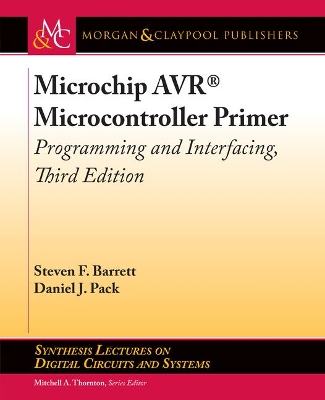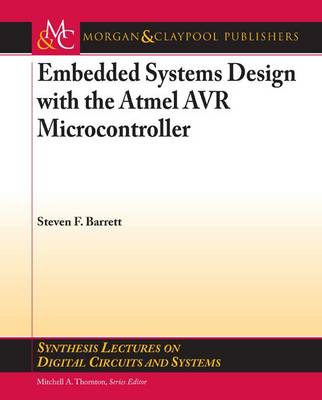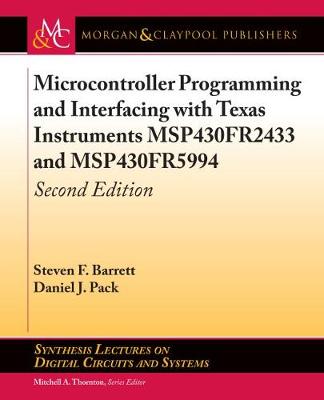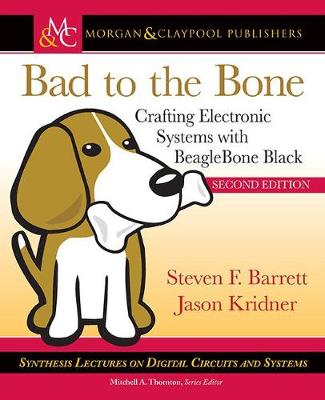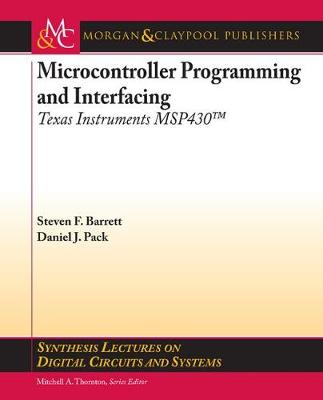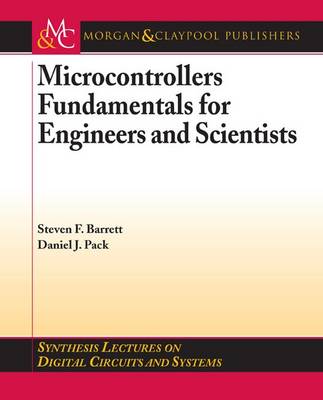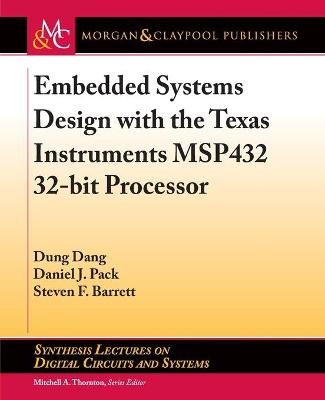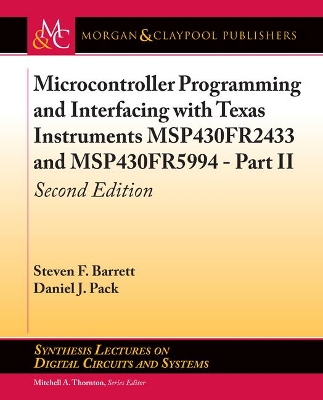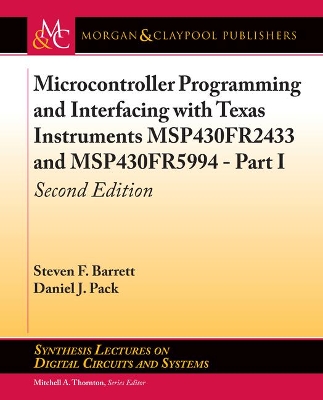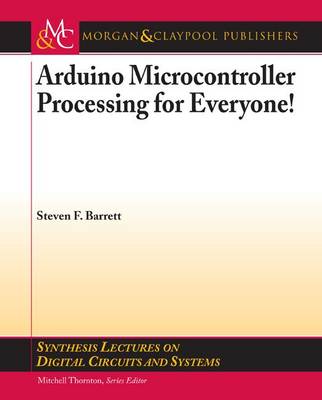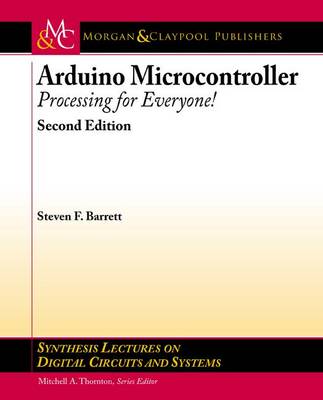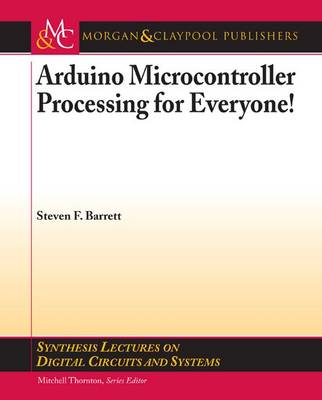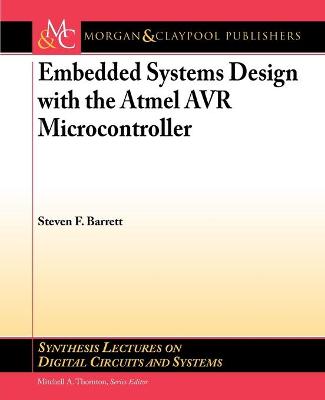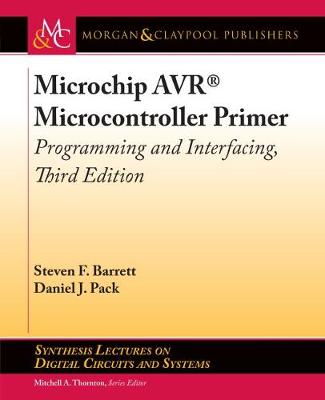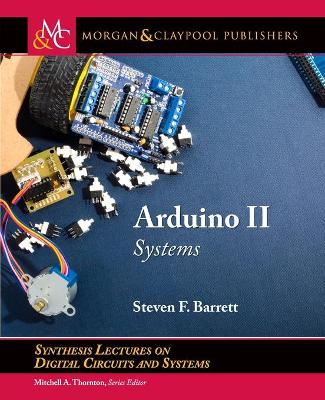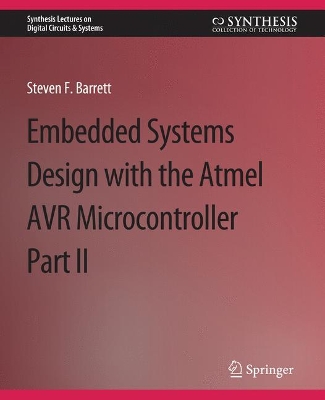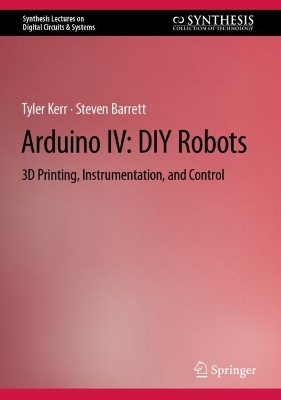Synthesis Lectures on Digital Circuits and Systems
20 total works
Microchip Avr(r) Microcontroller Primer
by Steven F Barrett and Daniel J Pack
Embedded System Design with the Atmel Avr Microcontroller
by Steven Barrett
Microcontroller Programming and Interfacing with Texas Instruments MSP430FR2433 and MSP430FR5994
by Steven F Barrett and Daniel J Pack
The MSP430 is a 16-bit reduced instruction set (RISC) processor that features ultra-low power consumption and integrated digital and analog hardware. Variants of the MSP430 microcontroller have been in production since 1993. This provides for a host of MSP430 products including evaluation boards, compilers, software examples, and documentation. A thorough introduction to the MSP430 line of microcontrollers, programming techniques, and interface concepts are provided along with considerable tutorial information with many illustrated examples. Each chapter provides laboratory exercises to apply what has been presented in the chapter. The book is intended for an upper level undergraduate course in microcontrollers or mechatronics but may also be used as a reference for capstone design projects. Also, practicing engineers already familiar with another microcontroller, who require a quick tutorial on the microcontroller, will find this book very useful. This second edition introduces the MSP–EXP430FR5994 and the MSP430–EXP430FR2433 LaunchPads. Both LaunchPads are equipped with a variety of peripherals and Ferroelectric Random Access Memory (FRAM). FRAM is a nonvolatile, low-power memory with functionality similar to flash memory.
Microcontroller Programming and Interfacing TI MSP430
by Steven Barrett and Daniel Pack
Microcontrollers Fundamentals for Engineers and Scientists
by Steven F Barrett and Daniel J Pack
Embedded Systems Design with the Texas Instruments MSP432 32-bit Processor
by Dung Dang, Daniel J Pack, and Steven F Barrett
Microcontroller Programming and Interfacing Ti Msp430
by Steven Barrett and Daniel Pack
The book contains many software and hardware examples to assist the reader in developing a wide variety of systems. The book covers two different Arduino products: the Arduino UNO R3 equipped with the Atmel ATmega328 and the Arduino Mega 2560 equipped with the Atmel ATmega2560. The third edition has been updated with the latest on these two processing boards, changes to the Arduino Development Environment and multiple extended examples.
Microcontroller Programming and Interfacing with Texas Instruments Msp430fr2433 and Msp430fr5994 - Part II
by Steven F Barrett and Daniel J Pack
Microcontroller Programming and Interfacing with Texas Instruments Msp430fr2433 and Msp430fr5994 - Part I
by Steven F Barrett and Daniel J Pack
Embedded System Design with the Atmel AVR Microcontroller
by Steven Barrett
Microchip AVR® Microcontroller Primer
by Steven F Barrett and Daniel J Pack
The revised title of this book reflects the 2016 Microchip Technology acquisition of Atmel Corporation. In this third edition we highlight the popular ATmega164 microcontroller and other pin-for-pin controllers in the family with a complement of flash memory up to 128 KB. The third edition also provides an update on Atmel Studio, programming with a USB pod, the gcc compiler, the ImageCraft JumpStart C for AVR compiler, the Two-Wire Interface (TWI), and multiple examples at both the subsystem and system level. Our approach is to provide readers with the fundamental skills to quickly set up and operate with this internationally popular microcontroller. We cover the main subsystems aboard the ATmega164, providing a short theory section followed by a description of the related microcontroller subsystem with accompanying hardware and software to operate the subsystem. In all examples, we use the C programming language. We include a detailed chapter describing how to interface the microcontroller to a wide variety of input and output devices and conclude with several system level examples including a special effects light-emitting diode cube, autonomous robots, a multi-function weather station, and a motor speed control system.
Embedded System Design with the Atmel AVR Microcontroller II
by Steven Barrett
Table of Contents: Embedded Systems Design / Atmel AVR Architecture Overview / Serial Communication Subsystem / Analog to Digital Conversion (ADC) / Interrupt Subsystem / Timing Subsystem / Atmel AVR Operating Parameters and Interfacing / System Level Design
This book will be accessible by all levels of students, advanced hobbyists and engineering professionals, whether using as a self-reference or within a structure design laboratory. The text then examines the many concepts and characteristics common to all robots. In addition, throughout the book , reasonably priced, easily accessible and available off-the-shelf robots are examined. Examples include wheeled robots, tracked robots and also a robotic arm.
After a thorough and easy to follow Arduino IDE and hardware introduction, the book launches into “do it yourself” or DIY concepts. A unique feature of the book is to start with a hands-on introduction to low cost 3D printing. These concepts will allow you to design and print your own custom robot parts and chassis. We then explore concepts to sense a robot's environment, move the robot about and provide a portable power source. We conclude with a several DIY robot projects.

